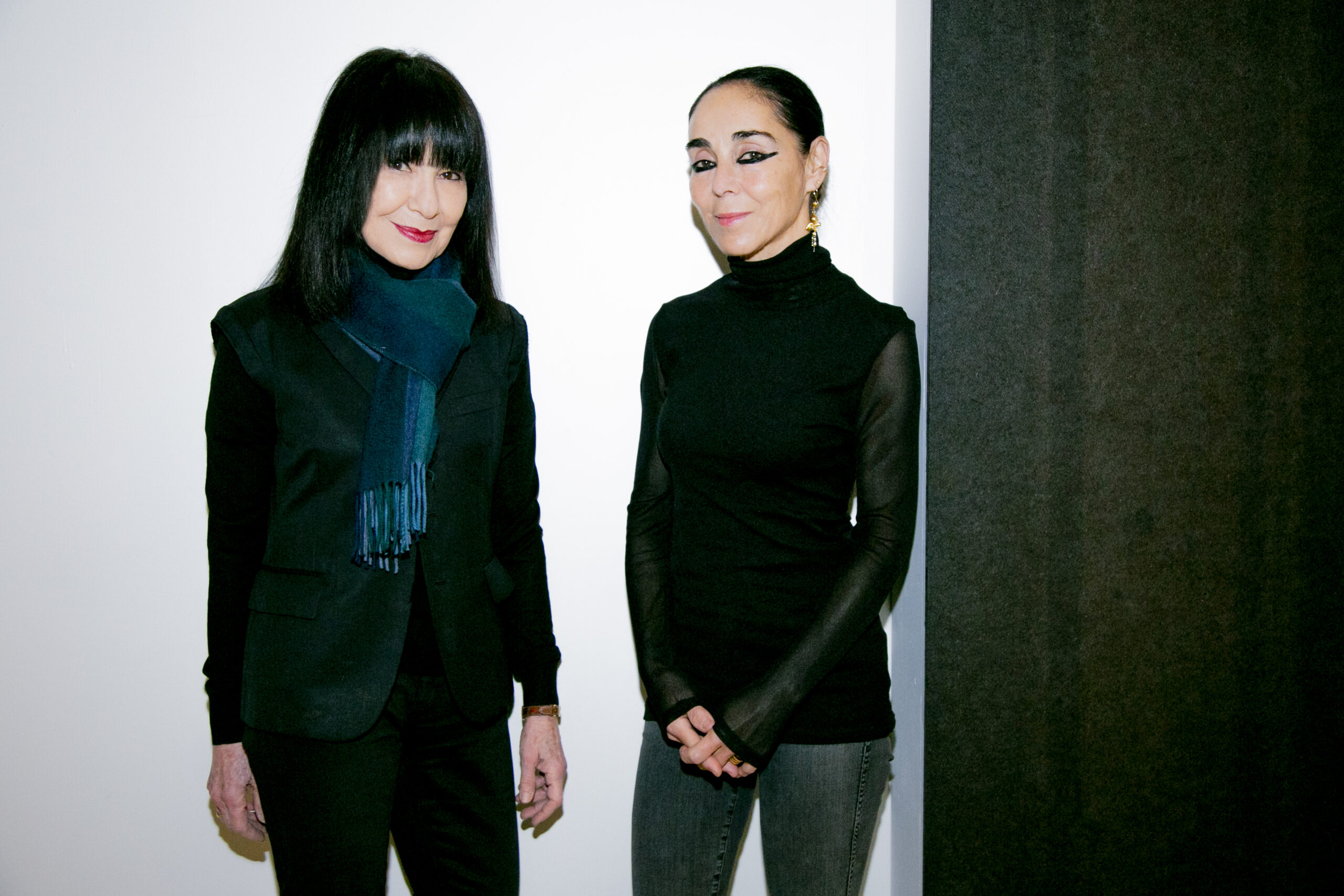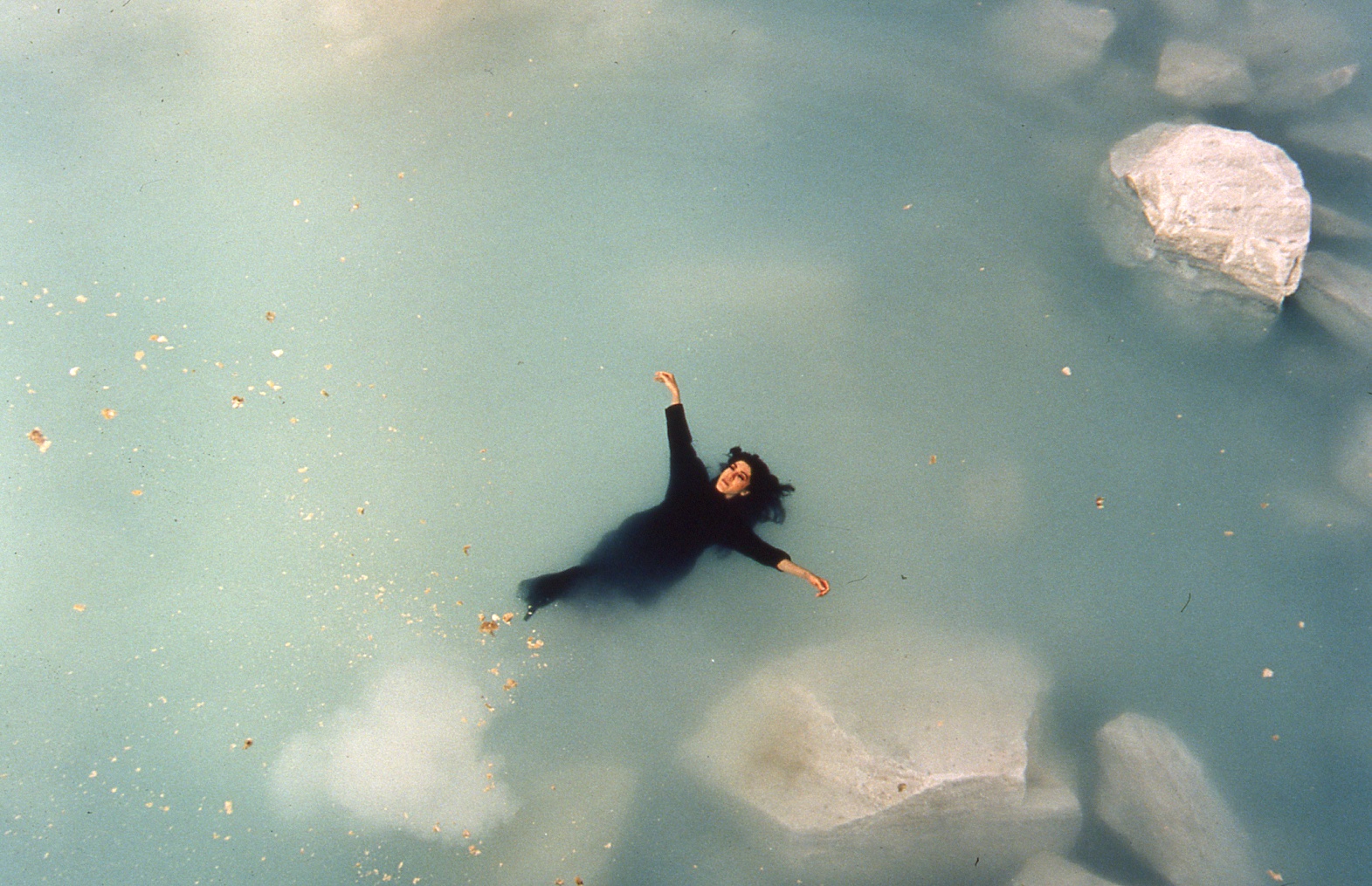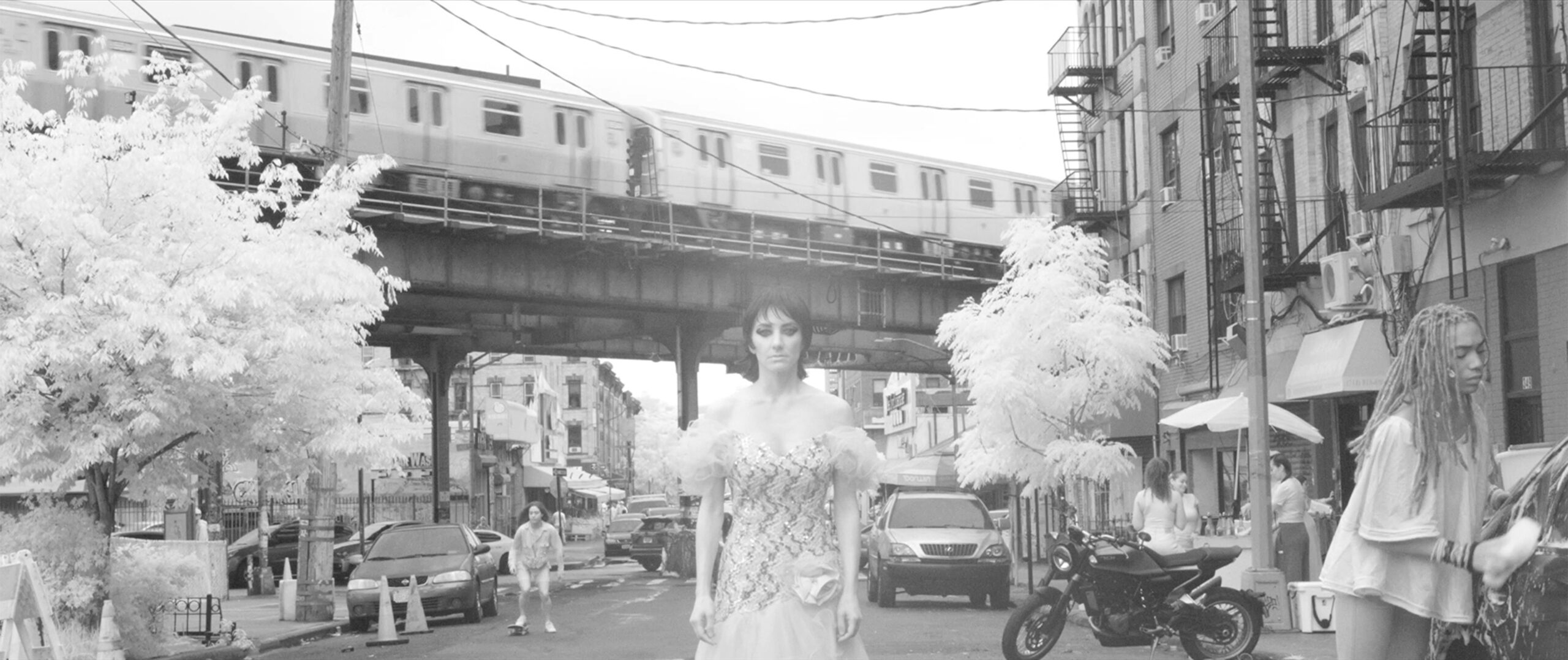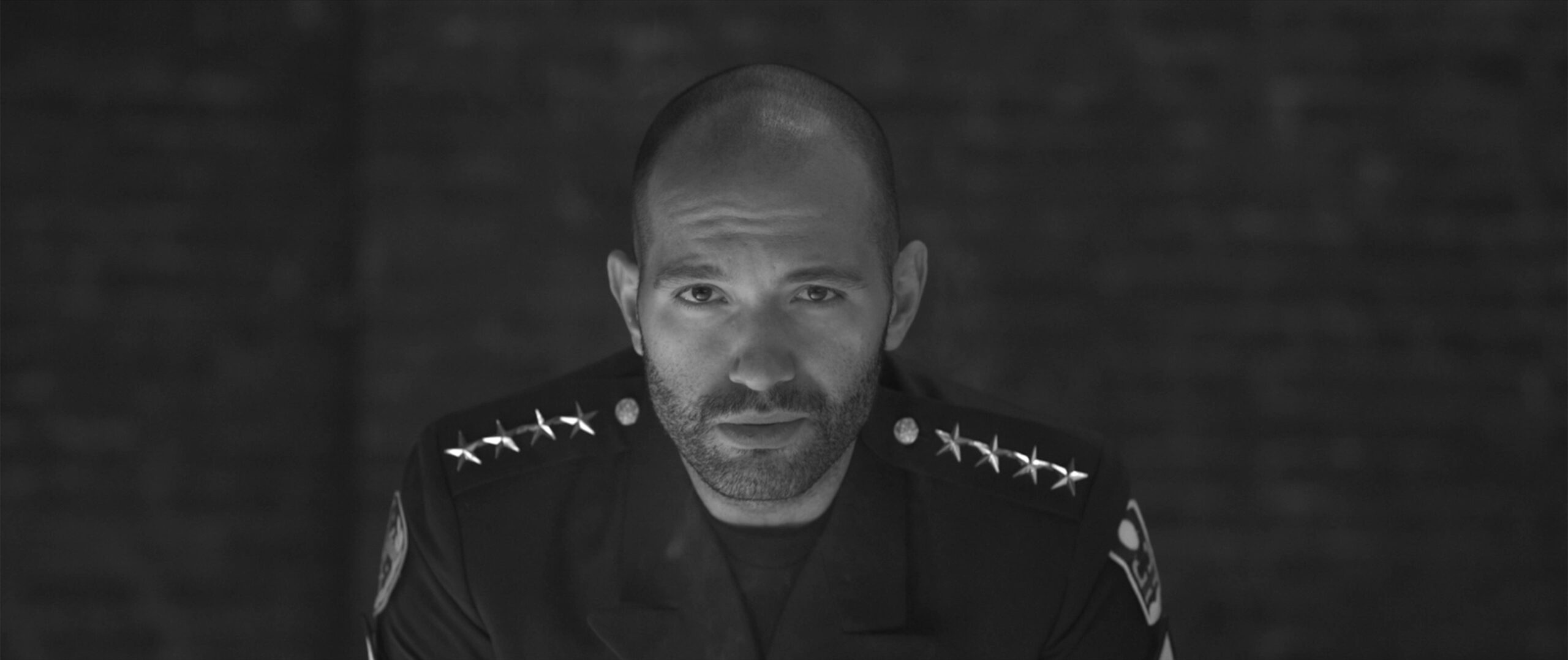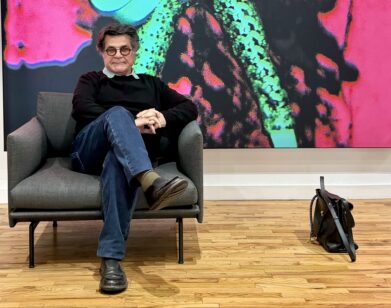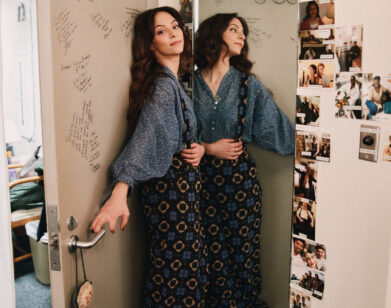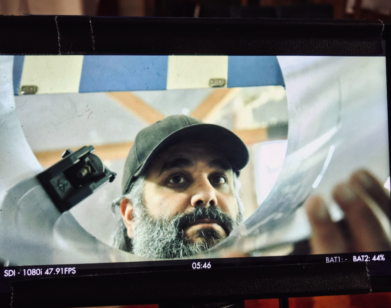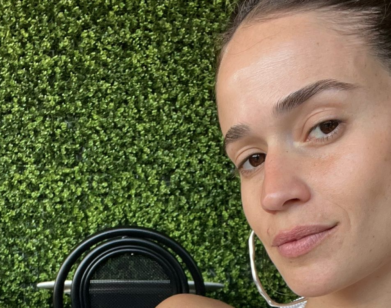IN CONVERSATION
Shirin Neshat on Protest, Performance Art, and the Power of Iranian Women
“I never wanted to make political art,” said the artist and filmmaker Shirin Neshat to the crowd at Performa’s Biennial. “My work is politically charged because of the life that I have lived and because many of my collaborators, most of us, are living in exile.” Since leaving Iran at seventeen, Neshat has been living in the U.S., making work that captures the experiences of women and children living under fundamentalist regimes. Her photographs, videos and sculptures meld abstraction and poeticism; the hallmark of her work is the Farsi script that often runs across her subject’s faces, where a veil might lay, which serves to “break the silence” imposed upon women.
Since her first solo show Unveiling (1992) at Franklin Furnace, she has exhibited at The Whitney Museum of American Art and The Art Institute of Chicago, working with collaborators like composer Philip Glass, singer Sussan Deyhim, and the cinematographer Ghasem Ebrahimian. At the Performa Biennial 2023, as part of Protest and Performance: A Way of Life, Neshat screened excerpts of two earlier films from Logic of the Birds (2001) and The Fury (2023), by way of introduction to a conversation between Neshat and Performa’s Founder and Chief Curator RoseLee Goldberg, in which they discuss Neshat’s filmography, the charge of opportunism, and the difference between art and activism. Edited for clarity and brevity.
———
ROSELEE GOLDBERG: Shirin, it’s been 22 years since you made the film that was just screened. That scene with Sussan Deyhim disappearing into the water just took my breath away. So 22 years later, there’s quite an evolution in terms of your thinking. I’d love to hear what it’s like for you to see the first few minutes of Logic of the Birds and a section of The Fury.
SHIRIN NESHAT: First of all, thank you for coming. The videos that you just saw, they’re integral with the live performance, so it’s not a film on its own. It’s interactive with what happens on the stage. It was a collaborative work that I did with a group of other Iranian people, the cinematographer Ghasem and Sussan, the singer and composer. But essentially, it’s based on The Conference of the Birds. It’s a very ancient mystical narrative written by Attar, which I believe is from the 12th century. And it’s a very beautiful, metaphorical story about us always looking for a leader. And at the end, the story is that we ourselves are that beautiful bird, we are the leaders. So it was our idea of reinterpretation of an ancient mystical text into something that had a more contemporary meaning. And of course, it’s still very relevant. But I have basically been navigating between Persian music and literature from both contemporary and ancient times. It was also a song that was sung by Nika, a young 14 or 15-year-old kid who was killed by the Islamic Republic of Iran during the Woman, Life, Freedom [the movement for Kurdish independence]. It became a sort of a national anthem.
GOLDBERG: You found a way to talk about very disturbing political issues while always finding an extraordinary visual way to tell the story. It’s a bit like a spoonful of sugar makes the medicine go down. We had that discussion with Isaac Julian once, about the work being so beautiful, and then you suddenly realize it’s kicking you in the gut. Can we talk about how you face that, the difference between politics and aesthetics?
NESHAT: I was thinking today, in preparation for what we’re going to be talking about in terms of protest art and performance. And it really made me think about how I never wanted to make political art. My work is politically charged because of the life that I have lived and because many of my collaborators, most of us, are living in exile. So a lot of the subjects are informed by issues that we face as people. And it made me think a lot about western artists as opposed to non-western artists such as myself, how we take certain risks in different parts of the world. But for us, it’s the risk of our lives. It’s arrest, it’s torture, it’s execution. And I think for the westerners, where you live in a more democratic society, you have the freedom of expression, so the risk that you might take is the influence it might have on your career.
GOLDBERG: I think there is a distinction between art that has political content and art that is activist. Isaac Julian, for example, his work is deeply political, yet he stays away from actual activism or protest. With somebody like Tania Bruguera, whose work is political, she also takes enormous physical risk and has been imprisoned in jail and so on. Ai Weiwei is another artist who’s taken this huge risk. How does the artist comment with protest and yet do it in some kind of safe place?
NESHAT: Well, I’m very privileged because I live outside of Iran, so I have a lot of freedom. And yet, I always consider that I draw a difference between activism and art. In activism, you differentiate between good and evil and right and wrong, but in art you allow the audience to draw their own interpretation. You cannot decide for them who is good and evil. Otherwise, it’s propaganda. But I draw a distinction between Iranian artists living in Iran during the political upheaval such as the current Woman Life Freedom movement, the Green Movement in 2009, the revolution in 1979, when they’re in the middle of it. Their art and activism is one, because whatever they do is fighting against a fascist regime. Where for me, I can process it, take my time, and my work becomes more symbolic in terms of political injustice, tyranny, oppression, discrimination. But I can be criticized for the fact that I don’t have a way of making an immediate reaction with my work. Last year, during Woman, Life, Freedom, I went through a lot of upheavals. We were very vocal, we were at the protests, and then suddenly my work was drawn into it and attacked, because if your work is used as a representation for the voice of the people of Iran, but you live outside, it’s problematic. And I was accused of being opportunistic. I felt extremely unprepared and that maybe I should be more silent and allow my work to speak for itself. But Iranian people expect you to be vocal in a time of political turmoil. So you see, you’re damned if you don’t and you’re damned if you do. And this is the dilemma: where do we draw the boundary between our work and what we say in public?
GOLDBERG: And yet your work has kept you as an exile, so there’s real danger. You have family and you can’t go back to Iran. Your work is so intrinsically about Iran in certain ways, but it’s also universally about men and women and freedom and repression. How are you handling this next phase of making art?
NESHAT: I want to say that, in my opinion, in order for a work to be effective, the artist has to have lived it. Pain is not something that you can make up. I deal with very dark material, violence and oppression, and it’s because I’ve experienced it. I did once have an experience that was quite horrifying in Iran when I was trying to leave with my young son. I was captured and I had hours of interrogation. And it was this moment that I felt my life had ended, that my freedom was taken away from me. So, in other words, I don’t choose subjects because they’re topical or they’re interesting. They’ve happened to me. Now, you asked me about universality. I think the works that are most ethnically specific are the most universal. It doesn’t have to be in Iran. It could happen in Ukraine, in Africa, in the U.S. Everything I make is highly stylized and fictionalized, so I don’t really have a command or authority to tell anyone how things are anywhere. But my intention is to basically respond to the life that I live in.
GOLDBERG: I’m sure you all know the image of women climbing into a boat and pushing off from the shore, and the men were sort of standing there all dressed the same, in their black pants and white shirts, sort of waving. And somehow the women had this incredible strength. In your work I see not just feminism, but a female position that you’re taking. Can you talk a bit about that?
NESHAT: I’ve always been very clear that my biggest inspiration in my life have been Iranian women across generations. And I don’t know of many places where women are so far against the wall but have continued to fight back, from my mother’s generation and my grandmother’s and even the current generation. The more you push Iranian women away and use them as some kind of a battleground for men’s ideology, the more they come back and fight with you. Where the men, oddly enough, are far more conformist. So I made a lot of use of Iranian women’s poetry. I made a movie called Woman Without Men, based on a novel by an Iranian woman. I have always looked up to Iranian women artists, not only their creations but the lives they lived, which are always a projection of their strengths and courage. So, for me, this has been really central.

